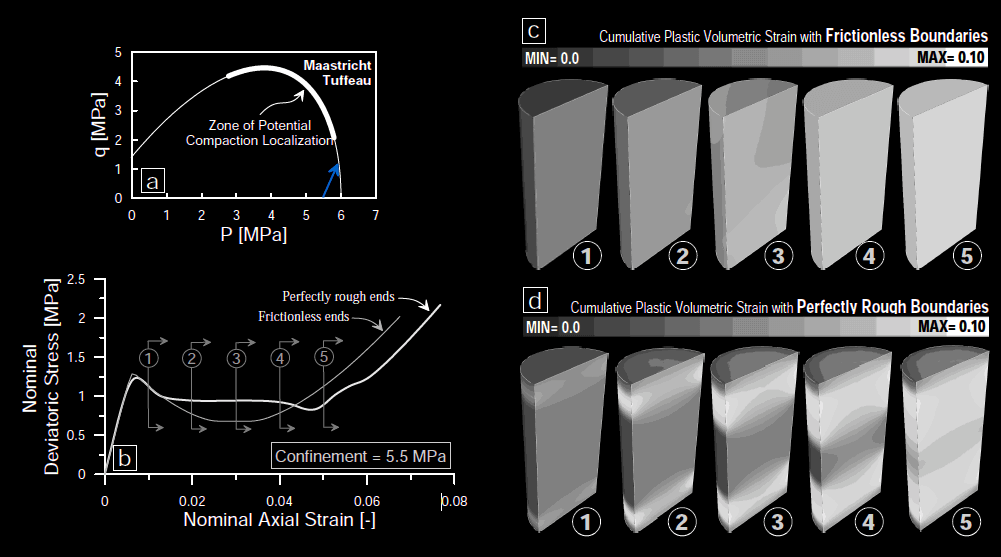Simulation of emergent compaction banding fronts caused by frictional boundaries

This study examines the role of boundary friction in promoting heterogeneous compaction in soft rock specimens loaded outside the strain localization domain. An elastoplastic constitutive model characterized by tunable hardening/softening behaviour is used to conduct the analyses. Numerical simulations of triaxial compression based on the finite element method show that rough boundaries cause non-negligible alterations of the stress paths experienced by material points across the specimen. Specifically, marked changes of the stress components transverse to the direction of loading have been computed near the specimen's boundaries, thus signaling the emergence of kinematic constraints promoting localized one-dimensional deformation. The numerical analyses suggest that material instability is a non-necessary condition for the emergence of compaction fronts. Such fronts propagated as a result of a severe deviation in the local responses induced by frictional constraints. Parametric analyses revealed that material responses near the boundaries shift from triaxial-like to oedometer-like behaviour depending on the selected friction coefficient. The largest shifts occur in the lower end of the boundary friction range, i.e., at values that closely approximate the prevailing friction in laboratory settings. These findings suggest that boundary effects can bias the assessment of the extent of the compaction localization domain. Experimental countermeasures and informed model calibration procedures are therefore necessary to minimize such bias and conduct more accurate predictions of soft rock compaction.
Download from Researchgate.com or icevirtuallibrary.com